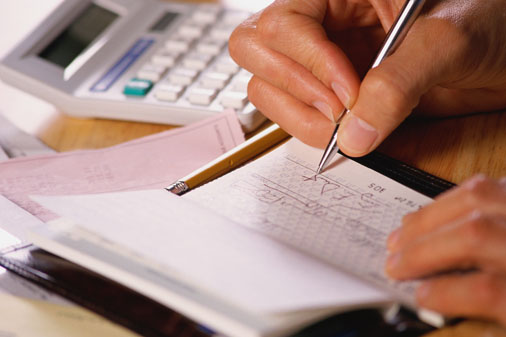How to Balance Your Checkbook
Instructions
-
1
Keep a track of all the transactions you make. You can do this manually by jotting everything down on a checkbook register/ notepad or if you are seeking greater precision, then record every transaction on a spreadsheet. Either way, you will have a track of all your expenses.
Many of you will want do it on a daily basis, either at the end of a day, or immediately after making a transaction. Adopt whichever method suits you but make sure you keep hold of all the receipts. -
2
Compare your own records with your bank statement. Every month, your bank will issue a record statement, which you can either obtain directly from the bank or view online. Review it and compare the transactions that you have made in a particular month with your own checkbook register. Check the remaining balance and make sure that it matches the amount which you have recorded manually. Review carefully and record any dealings which you have missed.
A discrepancy could be because of your own negligence or any amount which is yet to be displayed in your bank statement. Make sure that your cheque has not bounced as it may lead to additional fees. Moreover, there will be certain bank charges which you may be unaware of. Contact the bank and make a list of all other expenses. -
3
Re-balance your books again. Now re-calculate the amount once again to see if both values are equal. Although the process may appear time consuming, doing it correctly the first time will ensure that the practice is much easier to carry out in the next month and so forth.
The bank statement will always include hidden charges, relating to your ATM bills, payments and withdrawals but getting to know them will give you a fair idea about you financial standing at the end of the month. You will be aware of the interest rate a bank incorporates when you make a particular transaction. Correct the fault and errors for once and do a double check. Make a separating heading of all additional expenses, as you will incur them on a monthly basis. -
4
Close the records. Once you have recorded everything, close your checkbook by drawing a double line under the remaining balance. Compare the budget with your expenses.








